
How Business Intelligence Tools are Reshaping the Telecom Industry
Explore the power and importance of telecom business intelligence and how it fuels innovation, efficiency, and strategic data-driven decision-making.
15 MIN


By: TEAM International | April 21, 2024 | 16 min
The logistics and transportation industry was one of the most affected by COVID-19. Supply chain managers faced the biggest crisis in the past decade, which led to significant shortages and revenue losses. Is the turbulence over yet? Unfortunately, no. As we passed 2023, the fear of recession became present, and the supply shortage of 2022 threatened to turn into an oversupply. But there is more. Let's see what supply chain risks and disruptions you should watch out for next and ways to fortify your pipelines.
The pandemic and the Great Resignation left transportation hubs and shipping companies to deal with immense chaos caused by labor shortages, lack of materials, rising costs, and port congestion. Yes, the global supply chain (SC) pressure index dropped to 1.05 points in September 2022. In comparison, we saw a piercing spike the following April due to the Russia-Ukraine war and China's restrictions. Was the drop a good sign? Sure. But now, the scores are still higher than before the pandemic and wars.
It'll get worse before it gets better. So, you need to future-proof your business resilience with a forward-looking supply chain management (SCM) strategy. Follow our step-by-step recommendations to anticipate and beat potential supply chain challenges in 2024 and beyond.
Forty-eight percent of executives considered workforce shortages one of the major supply chain risks in 2022. Things weren't getting better in 2023. Hiring and retaining enough skilled people in the shipping industry is now more challenging than ever, considering the continuing Big Quit and the economy losing 3.6M jobs.
Skills deficit and talent shortages empower empower candidates to set higher requirements, resulting in lower financial capabilities for employers. Some sectors are already bracing themselves for the worst. For instance, the American Trucking Association anticipates being short 160,000 drivers in the next 10 years. The sea sector is also in danger due to the Russia-Ukraine war because the countries account for about 15 percent
of global seafarers.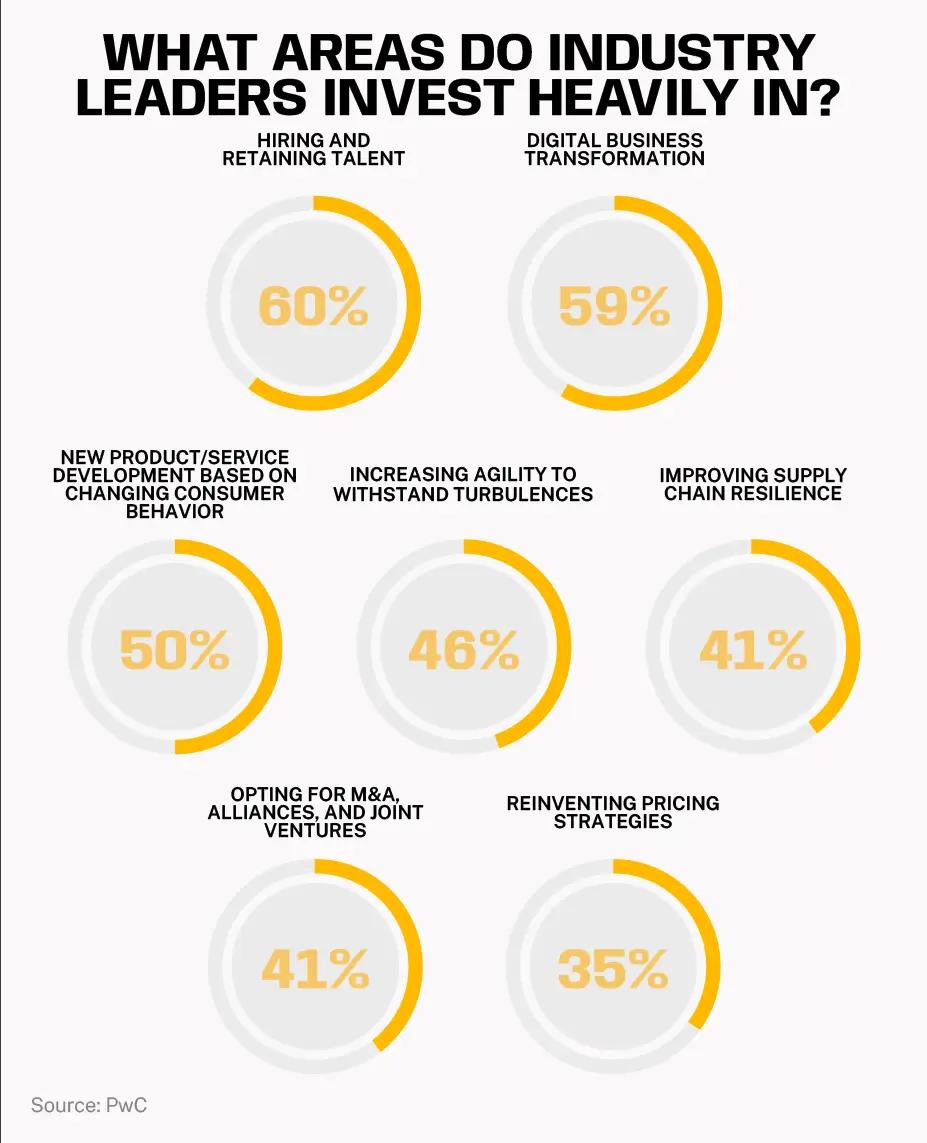
Reassess your hiring and retention practices:
Check whether you offer competitive compensation (considering inflation, too), comprehensive benefit packages, and work-life balance opportunities for all employees. If your turnover rate is poor, modernize your enterprise recruitment approach.
Encourage collaboration between managers and board members:
Retaining talents is a business problem that impacts your revenue. So, your entire C-suite should focus on talent management in short- and long-term strategies to successfully mitigate this side of supply chain risks.
Adopt technologies to mitigate labor shortage:
Gen Zs will seek a digital-first employee experience, ergonomic tools, and more unique benefits. So, opt for modern augmentation tech to attract younger talents or increase the accuracy and productivity of existing in-house employees.
Upskill your workforce for better outcomes:
Help your workers embrace digital transformation and succeed in all roles, from management and inventory to picking and loading to final-mile delivery.
Outsource SC functions to cope with the globalization of knowledge workers:
Bridge your talent gaps by outsourcing activities or jobs your company lacks. This approach also allows you to expand operations to offshore or nearshore countries. Plus, investigate the benefits of a "Supply Chain as a Service" model.
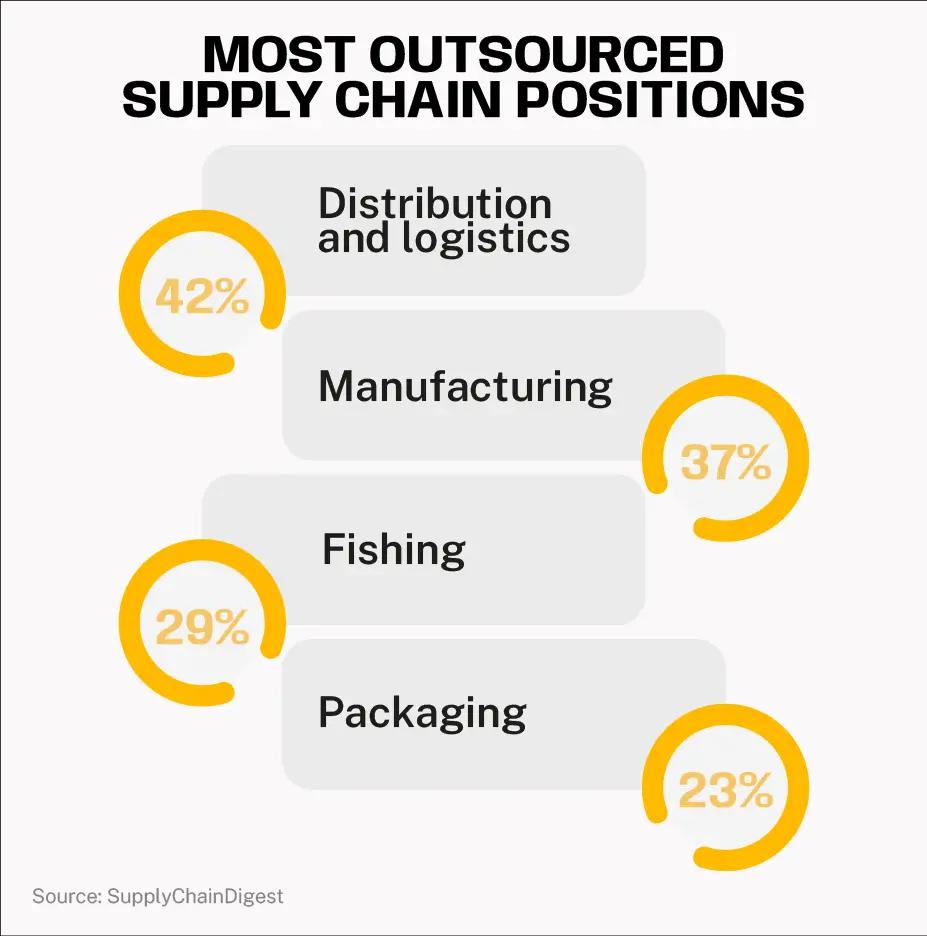
You can double your company's profits by reducing SC costs from 9 to 4 percent, especially after COVID-19 and the consequential drastic changes that resulted in colossal revenue losses for 58 percent of business owners. However, energy prices are skyrocketing, and transportation costs remain volatile following “Containergeddon.” They're no longer ten times higher than in the pre-pandemic era, but still not as low as we want them to be.
The Consumer Price Index in the USA went up 9.1 percent, from June 2021 to June 2022—the highest increase in 40 years. Europe is even in a deeper crisis with its 10.7 percent. The war in Ukraine also keeps adding to rising costs as there is no sign of it ending soon. So, at best, prices will become optimized. Because even if more ships were added to the global fleet in 2023, we face inflation and a pending recession, freight rates are unlikely to drop.
Plan intelligently: Make a thorough inventory to assess your stock units and cut production if needed. Prioritize your business goals and value streams and only then lower related expenses (value above costs). Select strict contract time frames to avoid sudden price spikes and drive out supply chain risks.
Analyze accurately: Try a Data Management as a Service, approach to forecast demand and supply faster and more accurately. Identify materials/components that increase product costs and check if you can substitute them. You can also use digital SCM platforms to monitor disruptions across your vendors' chains 24/7.
Collaborate transparently: . Set up an ecosystem of collaboration tools to accelerate decision-making across stakeholders and enable managers to mitigate disruptions promptly based on relevant data. We also advise partnering with third-party supply chain integrators to reduce overall costs across multiple channels, shorten delivery cycles, and efficiently deal with supply chain challenges.
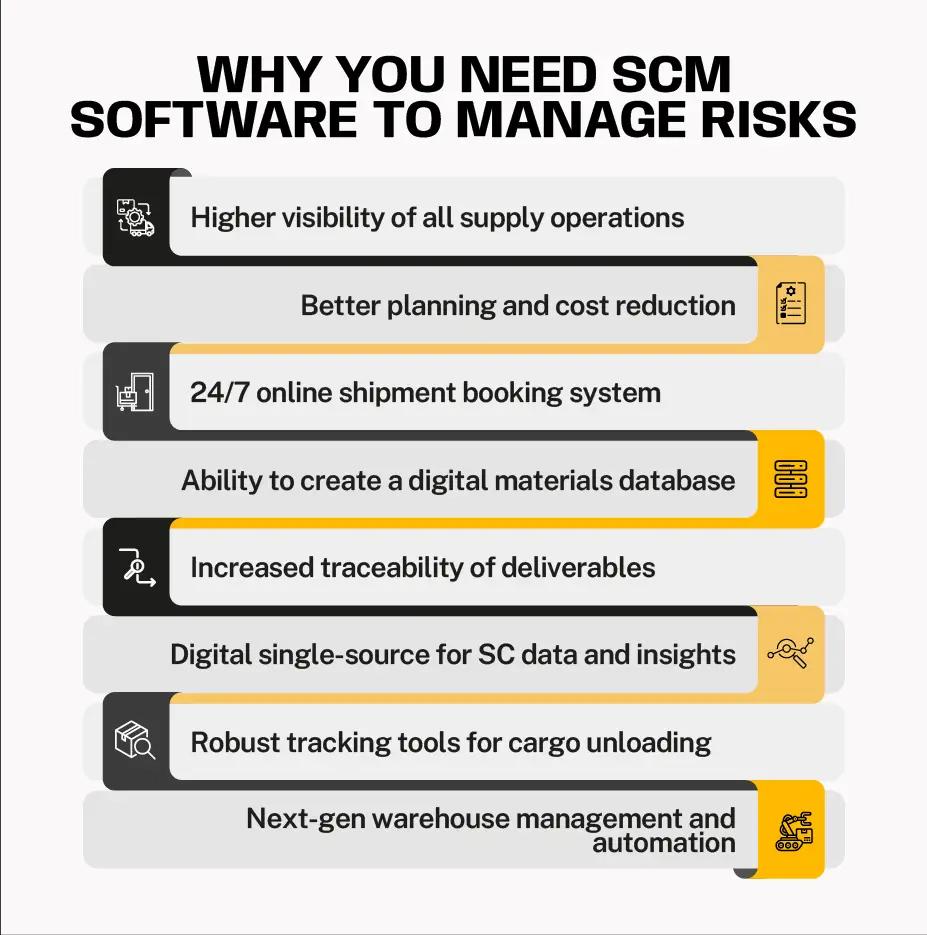
As global elections unfold, notably in the U.S., shaping the geopolitical landscape, the risks of international conflicts intensify. Current hotspots span Ukraine, Israel, Yemen, China, Taiwan, the Korean Peninsula, and Iran. Heightened tensions prompt national suppliers to seek internal partnerships for greater independence, which is crucial as geopolitical uncertainties can disrupt access to vital resources and trade routes.
Notably, U.S. ports have experienced delays, stalling ships for an average of seven days last year. Countries representing more than half the global population will hold elections this year, and U.S. contests have the biggest wild cards for impacting world events. In this case, the balance of power sits with swing voters in just a half-dozen states. A big open question is whether traditional and social media will place intentional guardrails on spreading misinformation. Absent governance in the online world, rogue actors located anywhere on the planet can and will wreak havoc.
On a related note, cyberattacks continued trending upward in 2023. More than 72 percent of businesses worldwide. were affected by ransomware attacks. Distributed denial-of-service attacks on governments and companies were also up significantly. Finally, while few will be happy with the aftermath, some political scientists see a cessation of the current level of hostilities in Ukraine by the end of 2024. Unfortunately, the situation will likely worsen before improving.
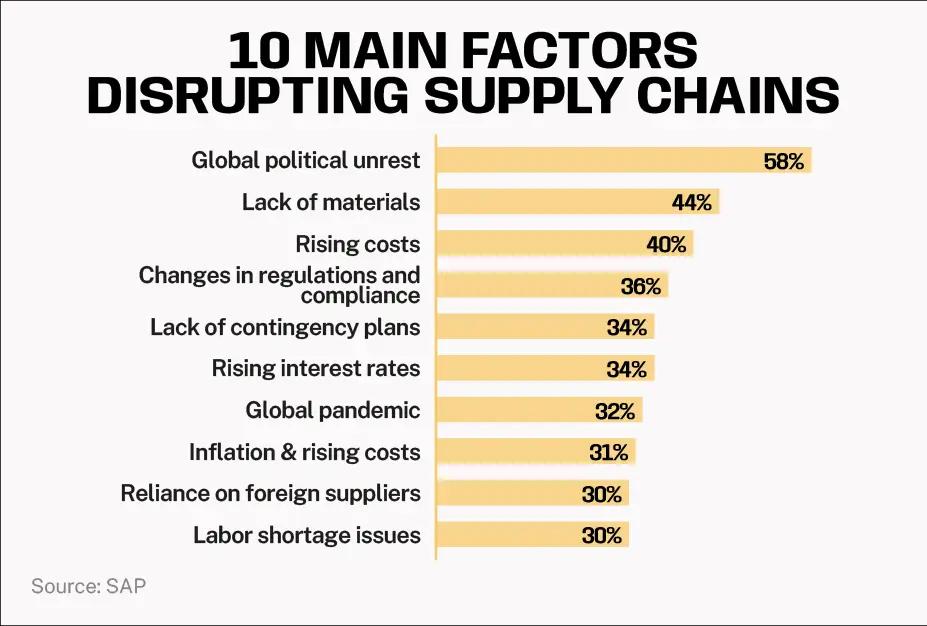
In 2022, digital transformation was the essential growth driver for 60 percent of executives. Meanwhile, in 2023, 6 in 10 executives' goals were to invest more in digitalization to streamline SC processes, boost data analytics capabilities, and manage supply chain risks. And 34 percent of leaders admitted to Gartner that embracing digitalization is the most important strategic change the transportation industry will face in the next five years.
In other words, becoming tech-savy is the key to achieving better supply chain visibility, traceability, and business insights. So, aside from becoming a guru of remote collaboration, you'll need to identify your blind spots and digitize across the entire supply chain in 2024.
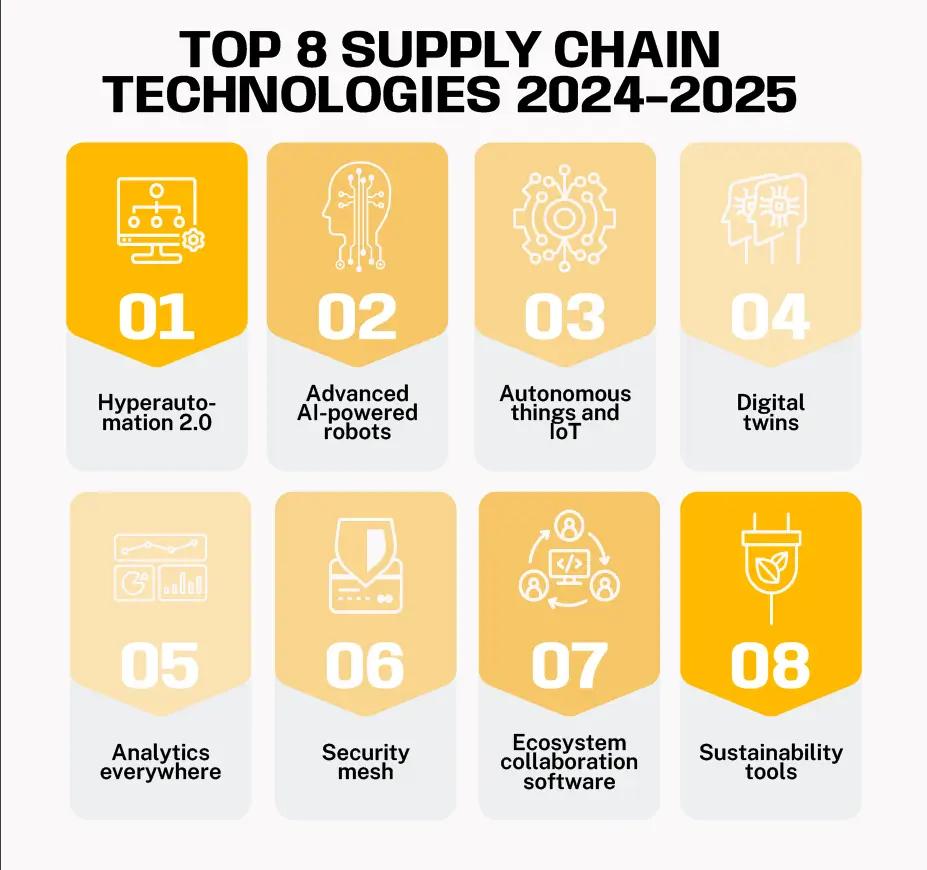
Weather disasters keep happening globally, significantly affecting the availability of natural and food resources and slowing down supply chain delivery cycles. What's more, governmental ESG regulations add more pressure to your workflows. Investors and consumers also tend to focus on more eco-friendly products and services. A 2023 Oxford Economics survey said that 88 percent of SC decision-makers have created or are working on a sustainability mission. You should catch up, too.
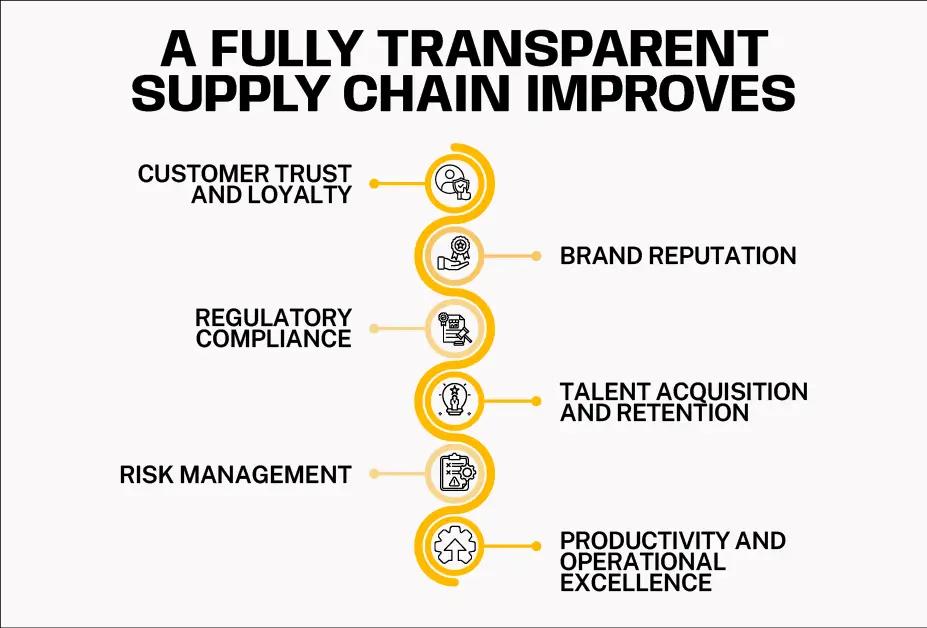
Fifty-two percent of business decision-makers surveyed by SAP said their supply chain still needs improvements. Around 60 percent admitted they had a decrease in revenue because of the current disruptions like global political unrest and inflation. So, supply chain challenges are far from over. This means SC executives should make data-driven tactical plans anticipating major trends in inventory and logistics processes in 2024.
To weather the storm, implement our supply chain tips above and focus on gaining the following capabilities:
Diversity: Reshape your supply chain to boost its maturity with a diversified portfolio of suppliers.
Flexibility: Make your SC more responsive and agile to manage unexpected obstacles and navigate disruptions efficiently.
Visibility and traceability: Share transparent data reports on your SC sustainability and product origins with your customers and partners.
The main rule you should practice is to aim big, implement incrementally, but scale fast.
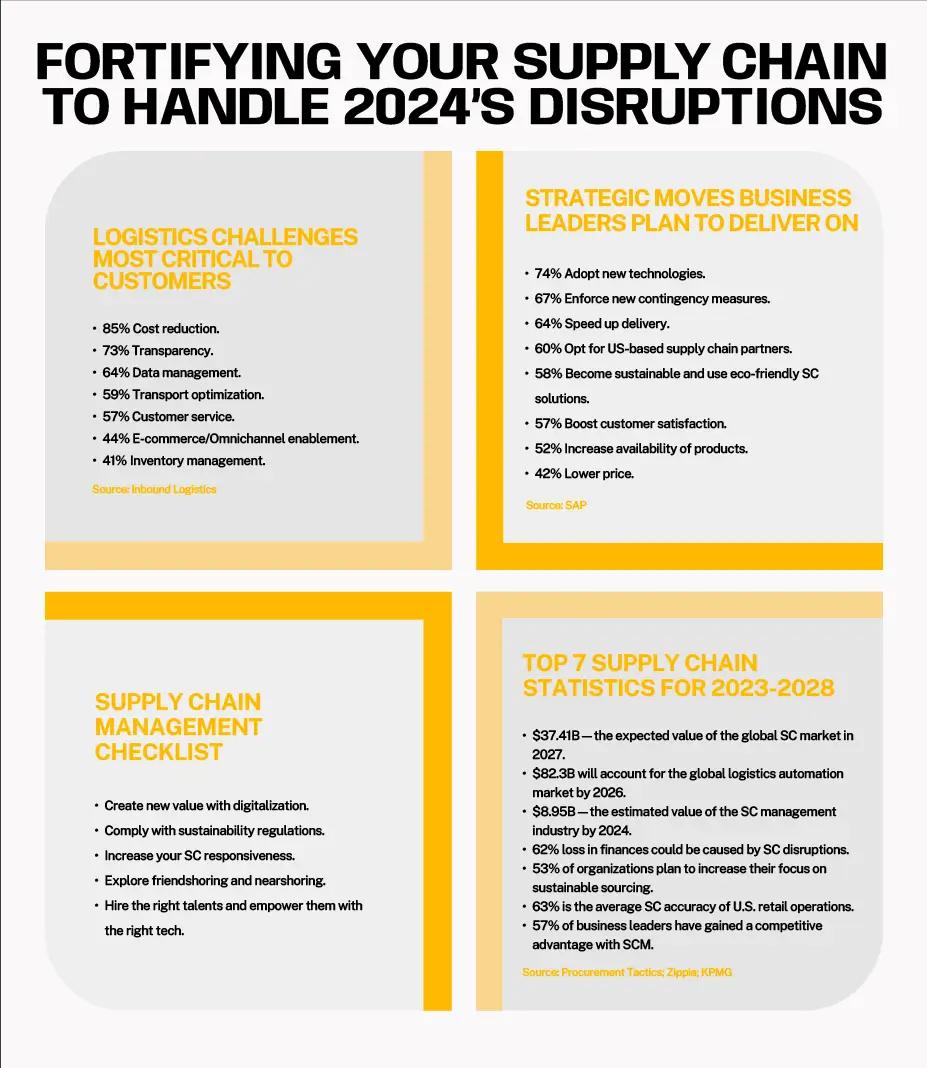

How Business Intelligence Tools are Reshaping the Telecom Industry
Explore the power and importance of telecom business intelligence and how it fuels innovation, efficiency, and strategic data-driven decision-making.
15 MIN

AI and Cybersecurity: Automating Incident Response Processes to Minimize Downtime and Damage
As technology rapidly evolves, cyber threats become increasingly sophisticated. Discover how AI enhances incident response, accelerates threat detection, and minimizes damage.
15 MIN

How Mobile Apps Can Improve Customer Service in the Banking Industry
Discover how BFSI companies have been adapting to clients constantly evolving needs and why a customer-centric approach is the next big move for this industry.
18 MIN